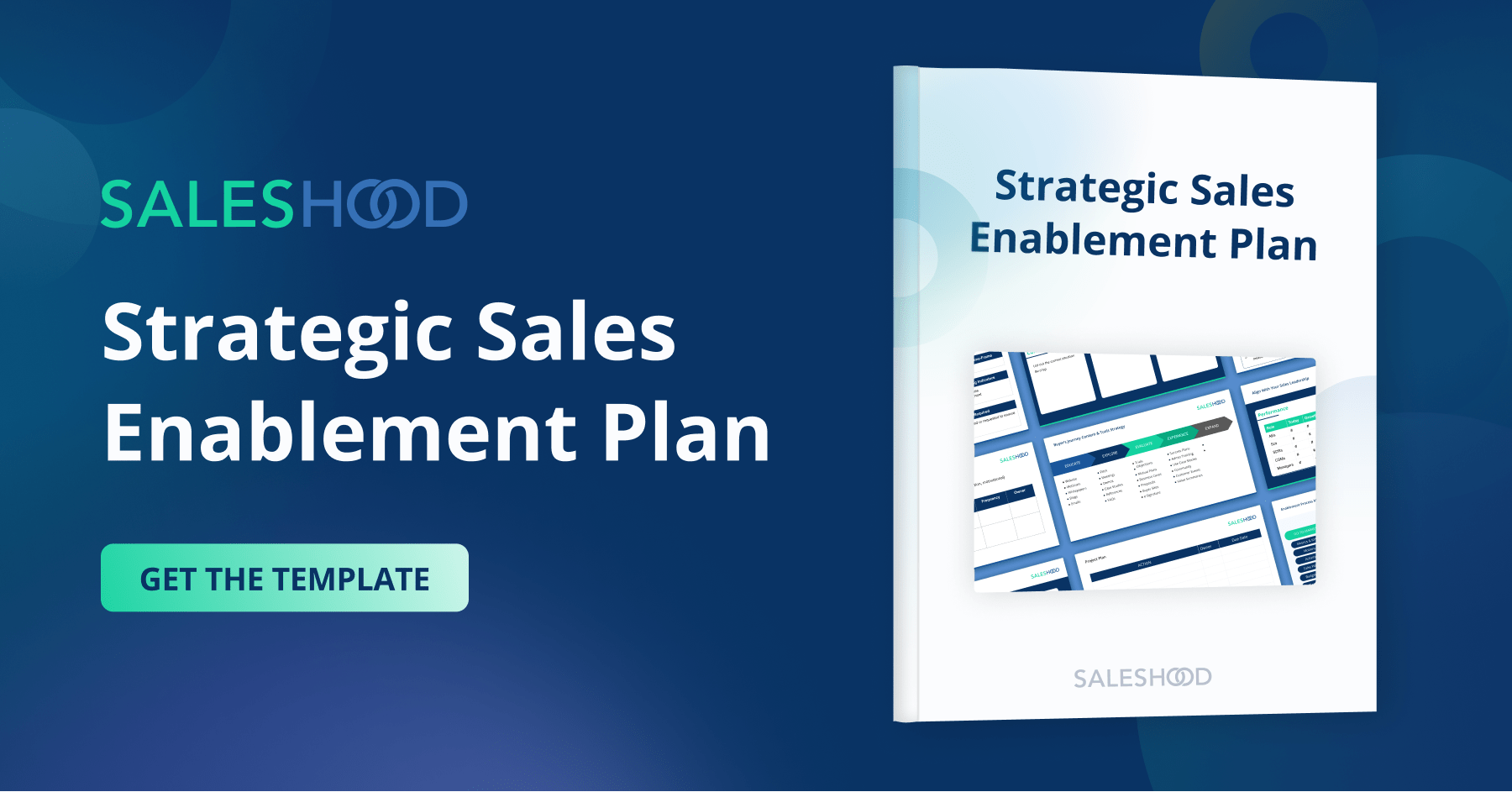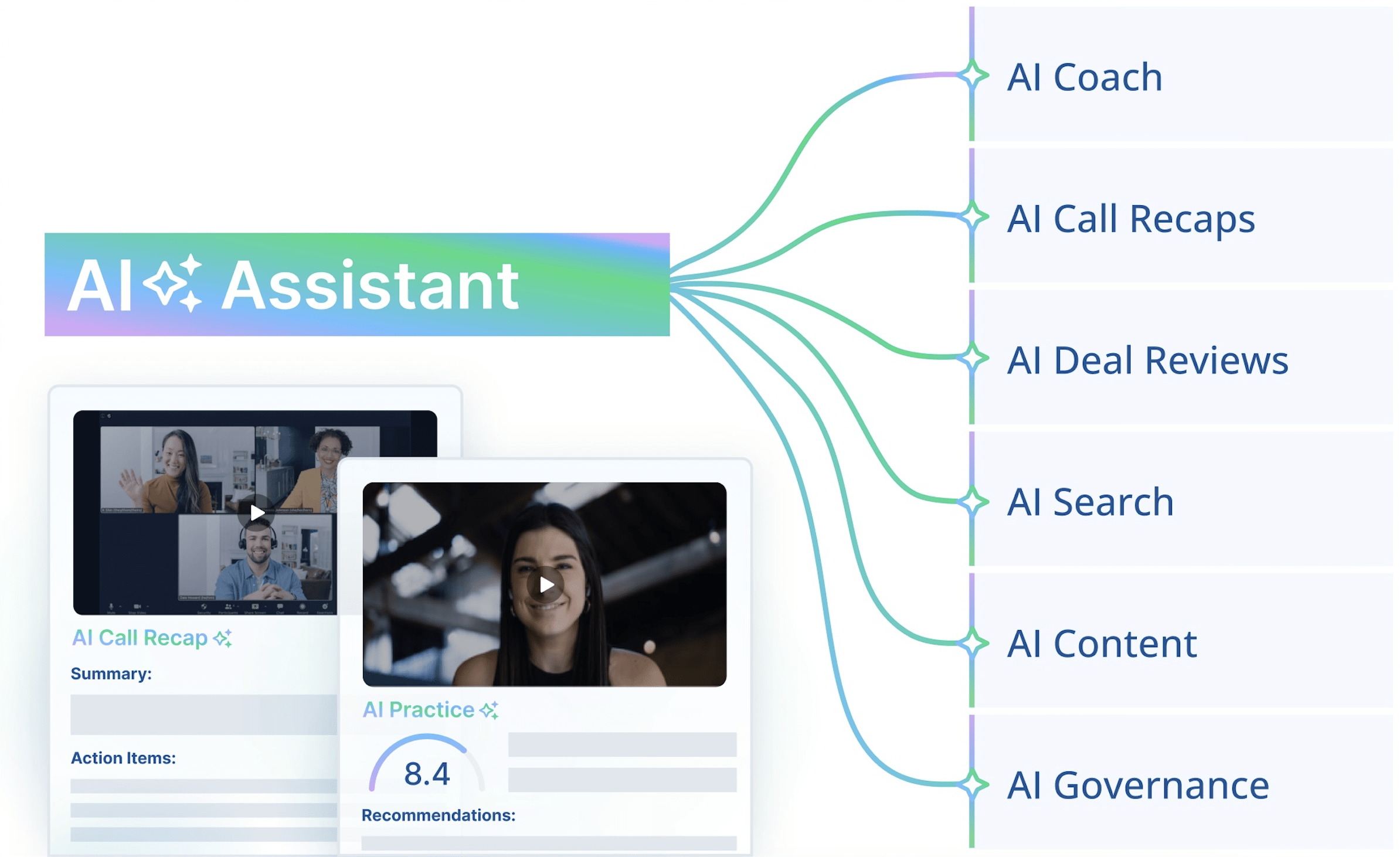Diagnose the Health of Your Sales Enablement Strategy
If you’ve embraced sales enablement to give your sales and marketing teams an edge, you’re in good company. Sales enablement has become a must-have revenue growth lever for companies around the world.
According to Godard Abel, CEO at B2B tech marketplace G2: “Sales enablement has recently surged in popularity, with nearly half a million buyers researching sales enablement software on G2 during the past year. The category is growing over 30% annually. With sales enablement software properly implemented and activated, reviewers report seeing dramatic lifts in win rate, sales, and quota attainment.”
To be sure, these are promising indicators of success. But in many cases, they tell you nothing about the efficacy of your sales enablement strategy.
So how can you know if your sales enablement is actually working? How can you assess the health of your sales enablement programs?
Below are three focus areas to help you diagnose the effectiveness of your sales enablement strategy.
You Have Top-Down and Bottom-Up Alignment
Sales enablement is a strategy designed to help companies grow their business faster by aligning their people, processes and priorities using relevant learning, coaching and communications.
Enablement works best when it’s company-wide, when it’s top-down and bottom-up, starting with the CEO and touching every employee, partner and customer. It’s inclusive of all departments, teams and roles. Everyone plays a part. Everyone is enabled.
The whole company starts to run and feel like a well-oiled machine. When products and campaigns launch, everything is coordinated. Sales and marketing and field reps are working well together. Teams are communicating. They’re trained and assessed. Your people are ready to rock ’n’ roll.
How to do it: This kind of alignment doesn’t just happen. You have to build it. It starts with being clear on who’s doing what in your organization. You have to align processes, messaging, and roles. It requires getting people to sit down together. It requires making sure they understand The Why.
Once you achieve this alignment, then you can move on to the next step.
Positive Impact On Leading and Lagging Revenue Outcomes
Another key to effective sales enablement is creating a positive impact on revenue outcomes. You measure this impact through quantifiable metrics and KPIs that are important to the business and through benchmarking your organization. These metrics need to show positive improvement.
Two types of metrics that are important to revenue organizations are leading and lagging indicators. Lagging indicators assess a business’s current state, while leading indicators predict future conditions. Together, they can help achieve accurate projections.
The problem is, most organizations measure only lagging indicators, such as the above-mentioned win rates and sales and quota attainment. As a result, they don’t know if their sales enablement is working until it’s too late! Organizations that measure only lagging indicators end up incapable of having programs that make an impact.
But if you measure leading indicators — such as calls that have been made, emails sent and other prospecting activities — you get a sense of the pipeline that’s being created. You get an insight into the impact your sales enablement is having on your company.
How to do it: In order to show positive revenue outcomes, follow these three steps: 1) Assess the skills and competencies of your teams. 2) Measure how your teams are performing and how they’re executing your sales process. 3) Capture all the enablement activity as data and correlate it with performance outcomes.
This is not a one-size-fits-all proposal. It will vary by role type. The way you enable your channel sales people will differ from how you enable your solutions consultants or your sales development folks, your SMB sales people, your enterprise sales people and so on. They’re all using different systems, so the motion will be a little different for each of them, as will the behaviors, the sales processes and the success criteria.
Sales Enablement is Viewed as a Valued Partner
In companies with effective sales enablement, the enablement leaders are viewed as valued partners to the business. They have the respect of leaders as much as of the rank and file. The programs they build are seen as valuable. They’re brought into the conversation around how they can contribute to the productivity of the teams. In short, the sales enablement team is considered a true friend and ally of Sales and Marketing.
How to do it: In order to establish sales enablement as a valued partner to the business, follow these three steps: 1) Talk to sales people about what they need and collect feedback from the teams. 2) Listen to the sales calls so you understand the challenges your sales people are facing. 3) Talk to front-line sales managers to get the pulse of what’s happening in the field.
To get a sense of how sales enablement is viewed in a company, you can run surveys or NPS feedback, but in my experience you can tell just from talking to people in your organization. You’ll get a sense of what your teams are feeling and what they’re needing simply from their tone and from what they say — and don’t say.
You want positive perceptions around sales enablement to become woven into your company culture. If you have a culture where it’s seen as mandatory and compliance-based — just another box to be checked — then you’re losing. But if it’s embraced, even if it requires extra effort to get to this stage, then you’re winning.
Have A Plan
When you align people, processes and priorities with go-to-market metrics and revenue outcomes, the magic of enablement will come to life at your company, exploding pipeline, win-rates and revenue.
The key is to have an enablement plan that’s aligned with your company’s top growth priorities. Write down your vision and team charter. Share your plan with your leaders. Be clear on expectations and outcomes. Measure success and be ready to iterate.



